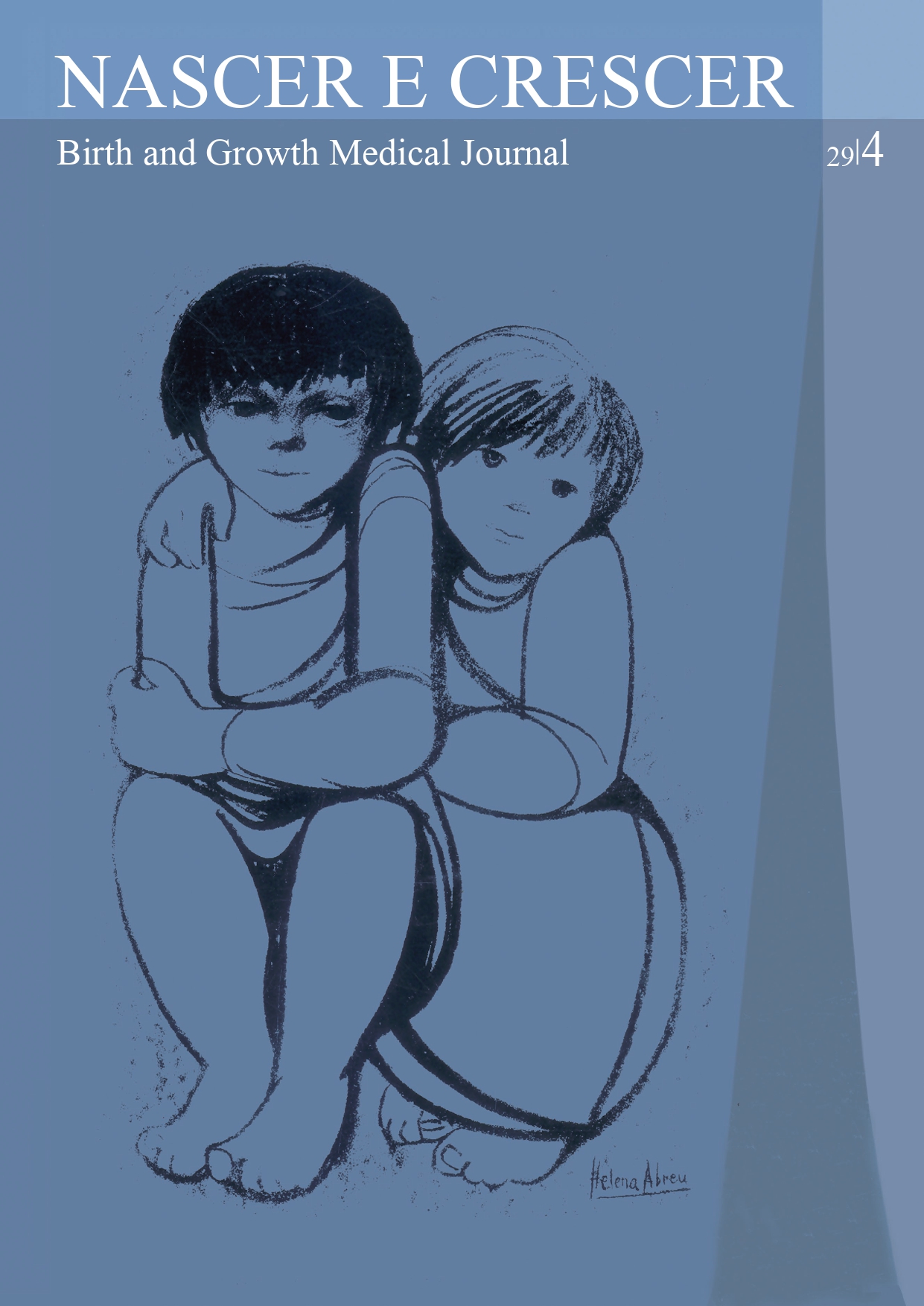The boy to whom things happen: case report of a condition once named “hysteria”
DOI:
https://doi.org/10.25753/BirthGrowthMJ.v29.i4.18483Keywords:
adolescent, child, conversion disorder, dissociative amnesia, dissociative disorders, hysteriaAbstract
Introduction: Although banished from current mental disorders classifications, the condition formerly known as hysteria has clinical manifestations still puzzling to clinicians. Herein is briefly revised the historical concept of hysteria, as well as, psychological mechanisms underlying some of its current derivatives: conversive and dissociative disorders.
Case report: A previously healthy 17-year-old boy presented with sudden onset of total strength loss in the lower limbs. After neurological assessment, the boy was diagnosed with conversion disorder. Two months later he developed trance and possession states requiring hospitalization, and later, dissociative amnesia. Despite psychological distress underlying patient’s symptoms, la belle indifference was also a meaningful issue.
Discussion: This study presents a critical reflection about conversion and dissociative disorders and diagnostic challenges arising from their inconsistent and variable clinical features.
Conclusion: With this case report, the authors intend to raise awareness to the risk of recurring care demand for care that can elicit iatrogenic harm and delayed proper treatment.
Downloads
References
Dmytriw AA. Gender and sex manifestations in hysteria across medicine and the arts. Eur Neurol. 2014; 73:44–50.
Silva LS, Ceccarelli PR. Histeria e masculinidade em Freud e na contemporaneidade TT - Hysteria and masculinity in Freud and in Contemporaneity. Estud psicanal [Internet]. 2016; 45:101–9.
Association AP. Diagnostic and statistical manual of mental disorders, DSM-5. 2013.
Stone J, Smyth R, Carson A, Warlow C, Sharpe M. La belle indifference in conversion symptoms and hysteria. British Journal of Psychiatry. 2006; 188:204-9.
Kozlowska K, Chudleigh C, Cruz C, Lim M, McClure G, Savage B, et al. Psychogenic non-epileptic seizures in children and adolescents: Part II – explanations to families, treatment, and group outcomes. Clinical Child Psychology and Psychiatry. 2018; 23:160-76.
Fiertag, Olivia; Taylor, Sharon; Tareen, Amina; Gerralda E. Somatoform Disorders. In: IACAPAP e-Textbook of child and adolescent mental health. 2012.
Kozlowska K. The developmental origins of conversion disorders. Clin Child Psychol Psychiatry. 2007; 12:487–510.
Ouss L, Tordjman E. Conversive disorders among children and adolescents: Towards new “complementarist” paradigms? Vol. 44, Neurophysiologie Clinique. Elsevier Masson SAS; 2014. p.411–6.
Sartorius N, Haghir H, Mokhber N, Azarpazhooh MR, Haghighi MB, Radmard M, et al. The ICD-10 Classification of Mental and Behavioural Disorders. 2013; 55:135–9.
Almeida AS, Oda AM, Dalgalarrondo P. O olhar dos psiquiatras brasileiros sobre os fenômenos de transe e possessão Brazilian psychiatrists ’ approaches on trance and possession phenomena. Rev Psiquiatr Clínica. 2007; 34:34-41.
Leal D. Manual de psiquiatria da infância e adolescência. 1st ed. Lisboa: Coisas de Ler; 2015.
Sar V, Alioǧlu F, Akyuz G, Karabulut S. Dissociative Amnesia in Dissociative Disorders and Borderline Personality Disorder: Self-Rating Assessment in a College Population. J Trauma Dissociation. 2014; 15:477–93.
Kozlowska K, Nunn K, Rose D, Morris A, Ouvrier R, Varghese J. Conversion Disorder in Australian Pediatric Practice. J AM ACAD Child adolesc Psychiatry. 2007; 46:1.
Downloads
Published
How to Cite
Issue
Section
License
Copyright and Authors' Rights
All articles published in Nascer e Crescer - Birth and Growth Medical Journal are Open Access and comply with the requirements of funding agencies or academic institutions. For use by third parties, Nascer e Crescer - Birth and Growth Medical Journal adheres to the terms of the Creative Commons License "Attribution - Non-Commercial Use (CC-BY-NC)".
It is the author's responsibility to obtain permission to reproduce figures, tables, etc. from other publications.
Authors must submit a Conflict of Interest statement and an Authorship Form with the submission of the article. An e-mail will be sent to the corresponding author confirming receipt of the manuscript.
Authors are permitted to make their articles available in repositories at their home institutions, provided that they always indicate where the articles were published and adhere to the terms of the Creative Commons license.


